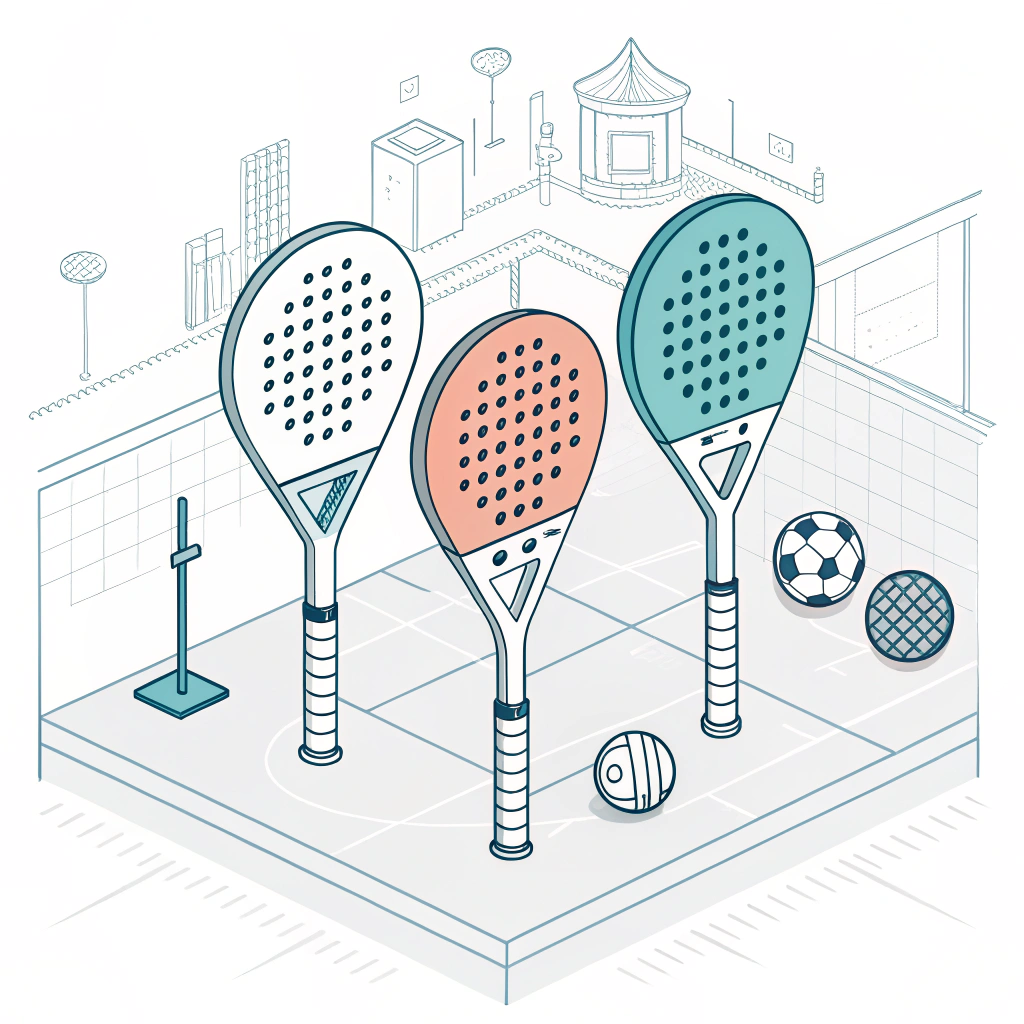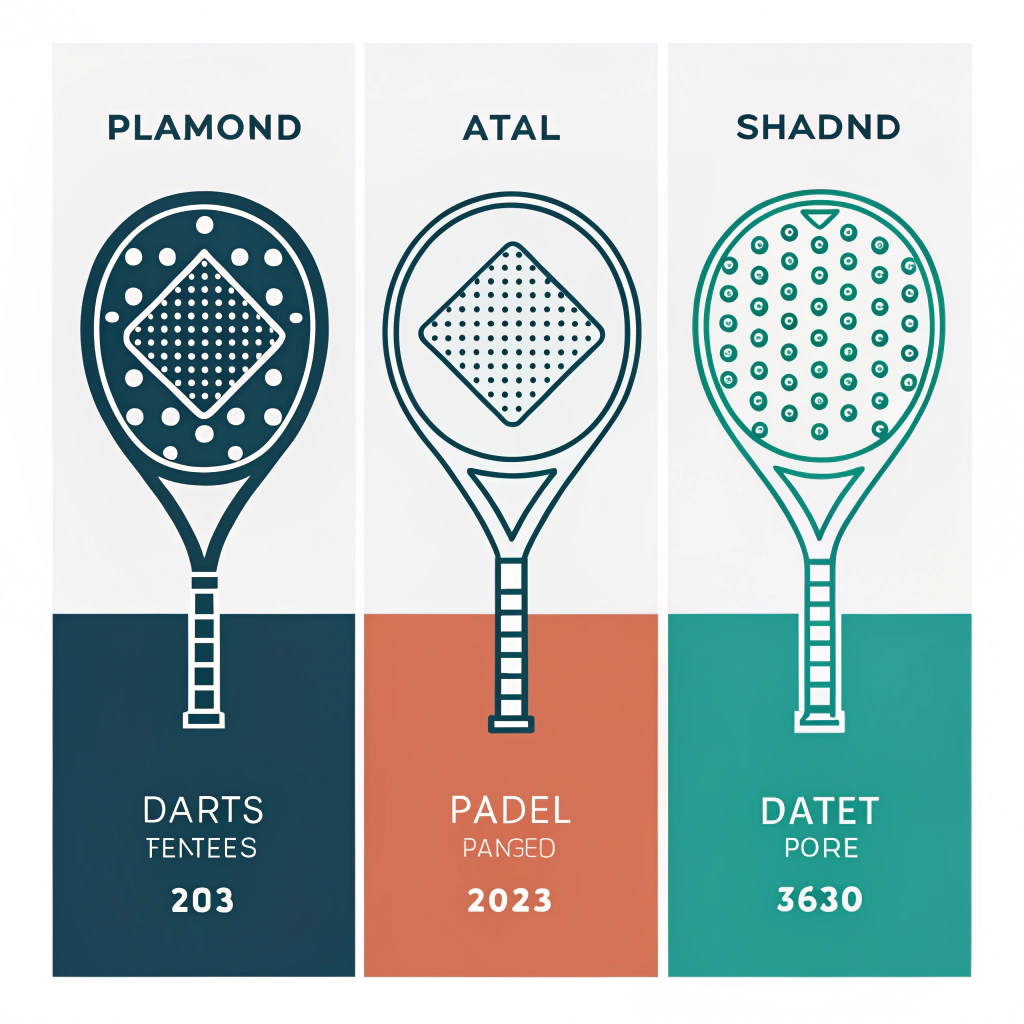When evaluating a manufacturing partner for your padel brand, it is essential to focus on quality materials, advanced production techniques, and customizable options to ensure your products stand out in a competitive market.
The global padel market continues to expand, driven by consumer interest in innovative sports equipment. Manufacturers like NEX Padel lead the industry by offering high-performance, customizable padel rackets that meet the needs of competitive players as well as emerging brands. For a brand manager or sports equipment entrepreneur, selecting the right OEM partner1 is critical. Superior production quality, rapid turnaround times, and flexible design options are essential in building a reputation for excellence.
NEX Padel has built a reputation as a reliable, efficient manufacturer. We support a wide range of products from Diamond, Round, to Teardrop shapes, using materials ranging from fiberglass to carbon fiber2 variants such as 3k, 12k, and 18k. Our production techniques ensure every racket meets stringent quality standards with enhanced durability and performance. Whether you are launching a new padel line or upgrading an existing portfolio, our technical expertise and OEM services provide the competitive edge needed in today’s market.
When exploring padel racket production, several core factors distinguish a reliable supplier from the rest. These include:
- Material Quality and Selection: The choice between fiberglass and various grades of carbon fiber (3k, 12k, 18k) is pivotal. Carbon fiber options offer higher strength and reduced weight, which directly contributes to racket performance.
- Production Technology: Advanced methods such as precision molding and custom design allow for variations in racket shapes and sizes, making it possible to cater to specific market segments. The combination of automated precision molding3 and hand-finishing ensures that every product meets both aesthetic and technical specifications.
- Customization Capabilities: Top-tier manufacturers offer customization options4, not only in racket shape but also in color, logos on the frame and handgrips, as well as additional accessories like hand grip and handle covers.
- Supply Chain Reliability5: Fast turnaround times and dependable delivery schedules are important in maintaining a consistent market presence. Manufacturers with proven track records, like NEX Padel, can swiftly handle production and meet tight deadlines.
These elements must be balanced with cost-effectiveness and the ability to scale production according to changing market demands.
Choosing the ideal padel racket for your brand involves understanding customer preferences and how different shapes cater to various playstyles. Below is a detailed comparison of the three most popular types:
| Racket Type | Key Features | Advantages | Ideal For |
|---|---|---|---|
| Diamond | Aerodynamic design with pointed head | Increases power shots and aggressive play | Advanced players seeking high impact |
| Round | Symmetrical design facilitating balance | Offers superior control and easier handling | Beginners and intermediate players |
| Teardrop | Compromise between power and control | Versatile performance enhancing both power and control | All-round players and customization fans |
This detailed table helps in visualizing the benefits and trade-offs, ensuring you align your product offerings with the target market’s expectations.
Manufacturers like NEX Padel provide these options with precise customization. This allows you to tailor each product based on client feedback or emerging trends, thus enhancing your market presence.
The production process starts with the careful selection of raw materials. For example, the use of 3k, 12k, and 18k carbon fiber in our processes ensures that each racket is engineered for a perfect balance between weight, durability, and performance. The combination of automated precision molding and hand-finishing ensures that every product meets both aesthetic and technical specifications.
Key production stages include:
- Material Pre-processing: Carbon fiber and fiberglass are prepared and laid out in a controlled environment.
- Molding: Advanced molds secure the desired shape—Diamond, Round, or Teardrop—ensuring the racket is perfectly balanced.
- Curing and Finishing: The composite structure undergoes a curing process, then is meticulously finished to match exacting quality standards.
Customization goes beyond selecting a shape. Modern padel rackets come with options for personalized design:
- Custom Logos and Colors: From the frame to accessories, you can ensure your brand identity is visible.
- Tailored Hand Grip and Handle Covers: These elements are essential for branding and provide an opportunity to embed your logo or design, further enhancing product uniqueness.
- Flexible OEM Services: Whether starting with an initial sample order or scaling up production, our systems are designed for quick turnaround and guaranteed consistency.
A well-executed customization strategy helps distinguish your brand in crowded markets and meets the specific requirements of discerning padel players.
Consider a scenario where a new padel brand wanted to enter the competitive market with a unique product line. The brand’s strategy involved partnering with an experienced OEM supplier like NEX Padel. The process unfolded as follows:
- Initial Consultation & Design Discussion: The brand discussed its target market, design preferences, and desired performance characteristics.
- Prototype Development: Our engineers produced prototypes that incorporated cutting-edge composite materials and innovative shapes.
- Feedback Loop & Customizations: Based on market testing, adjustments were made in racket weight distribution and grip design.
- Mass Production & Quality Checks: Once the design was finalized, production scaled up with strict quality control to ensure consistency across batches.
This methodical approach, emphasizing advanced production and reply customization, resulted in a successful market entry, with the brand quickly recognized for its quality and performance advantage.
To aid in your decision-making process, consider the following comparative table which highlights key manufacturing criteria:
| Criterion | NEX Padel Advantage | Industry Average | Notes |
|---|---|---|---|
| Material Versatility | Offers fiberglass and multi-grade carbon fiber options | Limited to standard options | Flexibility in material selection |
| Customization Capabilities | Full custom designs on racket shapes, logos, and accessories | Basic logo printing only | Higher degree of product personalization |
| Production Turnaround | Fast turnaround with rapid prototyping and reliable bulk production | Extended lead times | Essential for agile market response |
| Quality Assurance | In-house quality control monitoring every step | Outsourced and less consistent quality control | Ensures consistent product performance |
| OEM Partnerships | Trusted by well-known brands like Hirostar and Reebok | Fewer references across top brands | Strong industry credibility |
This table is a useful tool for comparing potential suppliers and deciding which partner aligns best with your operational and market goals.
As industry trends shift towards high customization and enhanced player performance, it is crucial to choose a partner who not only meets current demands but also adapts to future market changes. Here are some strategic considerations:
- Embrace Innovation: Innovate with design and material technologies that can quickly adapt to advanced playing styles.
- Scalable Production: Ensure the manufacturer can scale production up or down depending on market dynamics.
- Market Research Integration: Maintain close feedback loops between your brand and the manufacturing partner to continually refine and enhance product offerings.
- Robust Supply Chain: Choose partners with proven strategies for managing supply chain challenges to avoid bottlenecks or delays, ensuring your brand remains reliable in consumers’ eyes.
In today's competitive landscape, aligning your brand vision with a capable and innovative manufacturing partner can drive significant market success.
Choosing the right manufacturing partner is a critical decision for any padel brand. The combination of cutting-edge materials, advanced production techniques, and complete customizability forms the backbone of a product that meets both quality and competitive market standards. By comparing the detailed features of different padel racket types and understanding the capabilities of manufacturers like NEX Padel, brand managers and sports equipment entrepreneurs can confidently plan their market entry and future growth.
This guide outlines the advantages of leveraging high-performance, OEM padel equipment manufacturing. If you are ready to elevate your brand with superior quality and advanced production techniques, now is the time to engage with a partner who comprehends the nuances of padel sport innovation.
Which brand makes the best padel rackets?
While there is no single answer, top competitors include brands like Adidas Triboo LTD, Nox AT10 Genius Attack, Dreampadel Match Carbon 2.0, Babolat Technical Viper Juan Lebrón, and Head Graphene 360+ Alpha Touch. These brands represent the cutting edge of quality and performance appreciated in 2025.
How to design a padel racket?
Designing a padel racket involves starting with a clear vision—whether aiming for a minimalist design or an aggressive, performance-enhancing shape. Begin by selecting the type of racket (Diamond, Round, or Teardrop), choose high-performing materials such as carbon fiber, and then incorporate custom elements like unique logos, colors, and grip designs to meet market expectations.
How long do padel rackets last?
The lifespan of a padel racket can vary based on usage. Frequent, daily play can wear out a racket within 4-6 months, while regular use of 2-3 times per week might see a racket lasting up to a year. Reliable quality manufacturing and proper care can help ensure prolonged performance.
-
OEM partner: Click to read about the benefits of partnering with Original Equipment Manufacturers, including insights on quality control, scalability, and cost-effectiveness in production. ↩
-
carbon fiber: Click to learn about carbon fiber technology, including the differences between 3k, 12k, and 18k grades and how they impact product performance and durability. ↩
-
precision molding: Click to explore precision molding techniques that combine automation with hand-finishing for superior product quality and consistency. ↩
-
customization options: Click to understand the strategic importance of product customization, offering brands the flexibility to tailor designs, colors, and features to target market needs. ↩
-
Supply Chain Reliability: Click to gain insights on building a robust supply chain, emphasizing efficient logistics, dependable delivery, and agile responsiveness in competitive markets. ↩







